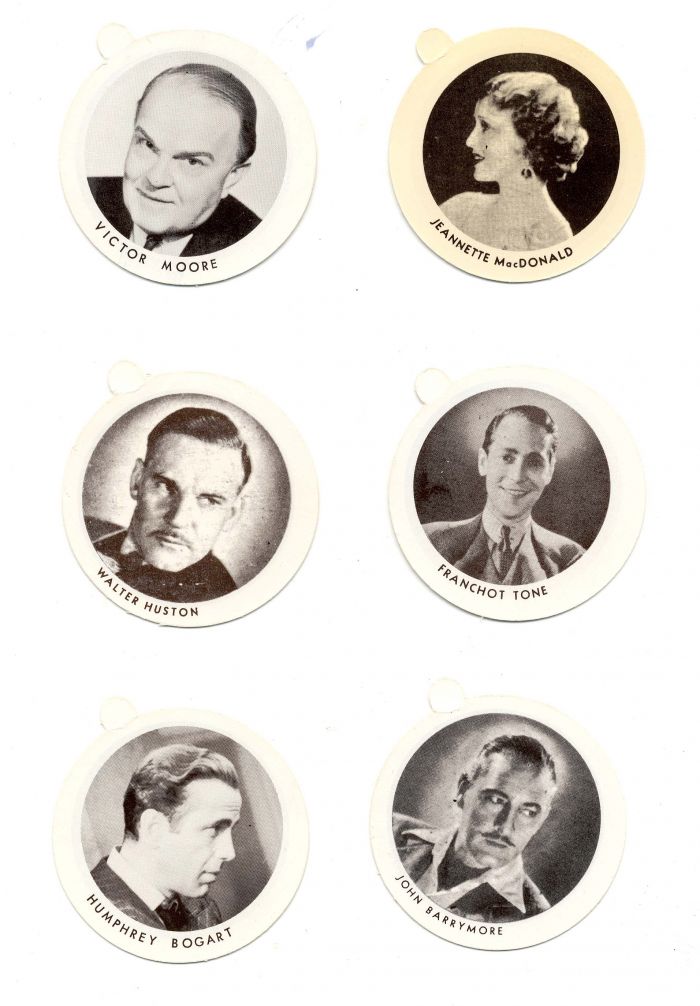Groupo of 30 Ice Cream Dixie Cups
Inv# AM1774
Group of 30 different (some repeats) dixie cup covers with pictures of movie stars such as Humphrey Bogart, Jean Harlow, Clark Gable, etc. For movie fans or someone who wants to take a nostalgic trip back to the 30's!
Dixie Cup is the brand name for a line of disposable paper cups that were first developed in the United States in 1907 by Lawrence Luellen, a lawyer in Boston, Massachusetts, who was concerned about germs being spread by people sharing glasses or dippers at public supplies of drinking water. Luellen developed an ice-cooled water-vending machine with disposable cups, and with another Bostonian, Hugh Moore, embarked on an advertising campaign to educate the public and to market his machine, principally to railroad companies. Professor Davison's study was instrumental in abolishing the public glass and opening the door for the paper cup. Soon, the devices, which would dispense cool water for one cent, became standard equipment on trains.
After Lawrence Luellen invented his paper cup and corresponding water fountain, he started the American Water Supply Company of New England in 1908 located in Boston. The company began producing the cup as well as the Water Vendor. In order to expand their territory, Luellen organized the American Water Supply Company of New York as well as the American Water Supply Company of New Jersey with the help of Hugh Moore. Instead of producing the cups and fountains, these subsidiary companies were charged with the sale and distribution of Luellen's products. In 1909 Luellen and Moore started the Public Cup Vendor Company in New York in order to lease their vendor machines. Their primary customers were railroads so that the devices could be implemented on passenger train cars. After many states started to ban the common drinking cup in public places, steady orders for Luellen's machine began to roll in. The success of Luellen and Moore's territorial companies inspired them to incorporate into the Individual Drinking Cup Company of New York in 1910.
The Dixie Cup was first called "Health Kup", but from 1919 it was named after a line of dolls made by Alfred Schindler's Dixie Doll Company in New York. Success led the company, which had existed under a variety of names, to call itself the Dixie Cup Corporation and move to a factory in Wilson, Pennsylvania. Atop the factory was a large water tank in the shape of a cup.
In 1957, Dixie merged with the American Can Company. The James River Corporation purchased American Can's paper business in 1982. The assets of James River are now part of Georgia-Pacific, a subsidiary of Koch Industries, the second largest privately owned company in the United States. In 1983, production moved to a modern factory in Forks, Pennsylvania. The original factory in Wilson has sat vacant ever since. The closing of the factory also prompted Conrail to abandon the Easton & Northern railroad branch, of which Dixie Cups was the last major customer.
In 1969, the Dixie Cup logo was created by Saul Bass, a graphic designer known for his motion picture title sequences.
The coupon collector's problem is sometimes called the Dixie cup problem.










Ebay ID: labarre_galleries